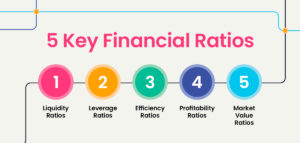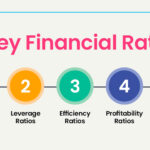Basel III’s Standardized Credit Risk Assessment Approach (SCRA) changes the game by assigning risk weights to unrated bank exposures based on an in-depth analysis rather than a flat 50% rate. This more granular approach demands thorough due diligence on counterparties, filtering data like annual reports to assess creditworthiness accurately. Consequently, SCRA enhances transparency and uniformity in risk assessment, crucial in avoiding the discrepancies we’ve seen with varying risk-weighted asset (RWA) calculations.
Under Basel III, banks can’t heavily rely on internal models due to their tendency to create inconsistencies. Instead, SCRA uses external credit ratings provided by institutions like ECAIs to determine risk weights. This shift improves the credibility and comparability of banks’ risk measurements, ensuring a more stable banking environment. The regulation also introduces higher capital adequacy requirements, meaning banks need to hold more capital against their risk-weighted assets, bolstering resilience in economic downturns.
However, implementing SCRA isn’t a walk in the park. Banks face significant challenges like handling vast amounts of data, adhering to stringent due diligence requirements, and managing compliance costs. Adapting to Basel III’s demands requires robust investment in technology and human resources, making meticulous planning and system updates essential. The benefits-a more resilient, transparent, and consistent banking sector-make these efforts worthwhile. Remember, this isn’t just financial jargon; it’s about the stability of institutions likely calling you today.
What Is The Basel Iii Standardized Credit Risk Assessment Approach?
The Basel III Standardized Credit Risk Assessment Approach (SCRA) is a method you use to assign risk weights to unrated bank exposures to calculate risk-weighted assets (RWAs). As part of the final Basel III reforms, SCRA ensures more consistency and transparency in risk assessments across banks. This approach replaces the uniform 50% risk weight previously applied to these exposures.
Here’s what you need to know about the Basel III SCRA:
- Risk Weighting Unrated Bank Exposures: Instead of a blanket 50% risk weight, SCRA uses a more detailed approach to determine the risk weight for unrated bank exposures.
- Mandatory Due Diligence: You are required to conduct due diligence when using credit ratings and adjust the risk weight based on your findings.
- Minimizing Variability: The revised standardized approach aims to reduce variability in RWAs across different banks, ensuring consistent risk assessment.
- External Ratings: For rated exposures like sovereigns, public-sector entities, and corporations, you can apply the External Credit Rating Approach (ECRA) using external credit ratings from approved agencies.
Bringing it all together – the SCRA, a key part of Basel III reforms, aims to restore credibility in RWA calculations by providing a more granular and consistent approach to risk weighting. This ensures the banking system remains not only resilient but also transparent.
How Does Basel Iii Affect The Calculation Of Risk-Weighted Assets (Rwas)?
Basel III affects the calculation of risk-weighted assets (RWAs) by restricting your use of internal models and enforcing a revised standardized approach. This regulation aims to restore credibility in banks’ RWAs calculations and ensure you hold sufficient capital against your assets. Key changes include:
- Minimum Output Floor: Your bank’s aggregate modelled RWAs must be at least 72.5% of those calculated under the standardized approach, with a five-year phase-in period.
- Risk Sensitivity and Adjustment: The revised credit risk standardized approach (SA) is more risk-sensitive, reducing RWA variability across banks. For instance, under the new Standardized Credit Risk Assessment Approach (SCRA), unrated bank exposures now have a specific risk-weight.
- External Credit Ratings: You are required to perform mandatory due diligence when using credit ratings for exposures and adjust the risk-weighting based on this due diligence.
- Capital Requirements: Globally systemically important banks might see a 21% increase in capital requirements, while regional banks might experience a 10% rise.
These changes mean you’ll need to be more diligent in managing your capital and risk assessments, placing less reliance on internal models and adhering more strictly to standardized metrics.
All things considered, Basel III requires you to adjust your RWA calculations by adopting a more standardized approach, enhancing risk sensitivity, and increasing diligence with external credit ratings, which collectively aim to bolster the credibility and stability of your bank’s capital structure.
What Are The Main Differences Between The Standardized Approach (Sa) And The Internal Ratings Based (Irb) Approach?
The main differences between the Standardized Approach (SA) and the Internal Ratings Based (IRB) approach lie in how you calculate risk-weighted assets (RWAs) for credit risk:
Firstly, the SA uses a set risk weight schedule based on asset classes and external ratings. For example, a corporate loan might get a 50% risk weight if the borrower is rated A+ to A-. In contrast, the IRB allows you to use internal rating systems, estimating your own risk parameters like probability of default (PD), loss-given-default (LGD), and exposure-at-default (EAD).
Next, the SA is simpler and more standardized. You categorize assets into predefined buckets with specific risk weights set by regulators. On the other hand, the IRB is more complex, relying on internally developed models and requiring significant data and risk management capabilities.
Additionally, the SA offers less flexibility, not reflecting your specific risk profile as precisely as the IRB approach does. The IRB is more flexible and tailored to your own risk perceptions and historical data, but it’s under more regulatory constraints, especially under Basel III reforms.

Furthermore, while implementing the SA is easier with lower compliance costs, the IRB approach demands explicit supervisor approval and can be costlier due to the need for robust internal models and ongoing validation.
Finally, the SA is generally less risk-sensitive, which may not capture nuanced differences in asset risk profiles. In contrast, the IRB is more risk-sensitive, aiming to better reflect actual risk based on your bank-specific data.
Lastly, understanding these differences helps you choose the right approach based on your risk profile, data capabilities, and regulatory requirements.
How Are External Credit Ratings Used In The Basel Iii Standardized Approach?
External credit ratings are crucial in the Basel III Standardized Approach (SA) as they help determine the risk weights for different exposures, which in turn calculate the capital required to cover potential losses. Here’s how you can understand their usage:
First, these ratings from External Credit Assessment Institutions (ECAIs) are used to assign risk weights to various exposures such as sovereigns, public sector entities, corporates, and banks. For example, higher ratings like ‘AAA’ translate to lower risk weights, meaning you would need less capital for those exposures. Conversely, lower ratings require you to allocate more capital due to increased risk.
Next, Basel III introduces two key approaches for utilizing external ratings:
- External Credit Risk Assessment Approach (ECRA): This approach leverages external ratings to determine risk weights, ensuring you exclude any government support from these ratings.
- Standardized Credit Risk Assessment Approach (SCRA): Applied mainly for unrated bank exposures, this approach follows a more formulaic method to determine risk weights.
Additionally, you need to conduct mandatory due diligence even when using external ratings. This step may require you to adjust risk weights based on your assessments.
Lastly, Basel III imposes an output floor, meaning the Risk-Weighted Assets (RWAs) calculated using internal models must not fall below 72.5% of those derived under the SA. This ensures you can’t excessively lower capital requirements through internal models.
Finally, using external credit ratings under Basel III: Standardized Approach helps you standardize risk assessment and maintain transparency and comparability across banks globally.
What Changes Does Basel Iii Introduce For Unrated Bank Exposures?
Basel III introduces significant changes for unrated bank exposures through the Standardized Credit Risk Assessment Approach (SCRA). These changes replace the previous uniform risk-weight of 50% with more risk-sensitive weightings. You’ll find that under SCRA, the risk-weighting depends on the creditworthiness of the counterparty, which you determine through thorough due diligence.
You must gather extensive data from counterpart banks’ annual reports to comply with these new requirements. This increases your data management burden but aims to make the banking sector more resilient and risk-sensitive.
In closing, Basel III’s SCRA requires you to assess counterparties more rigorously, increasing your reporting workload but leading to a more stable banking environment.








